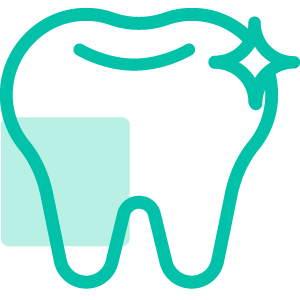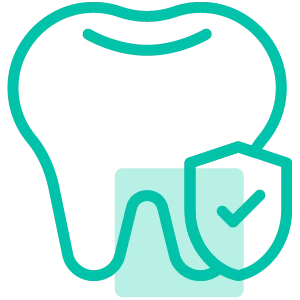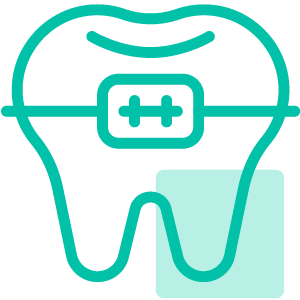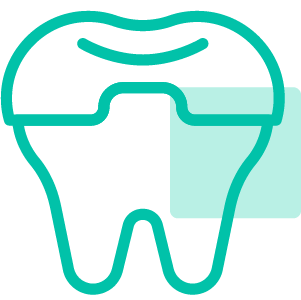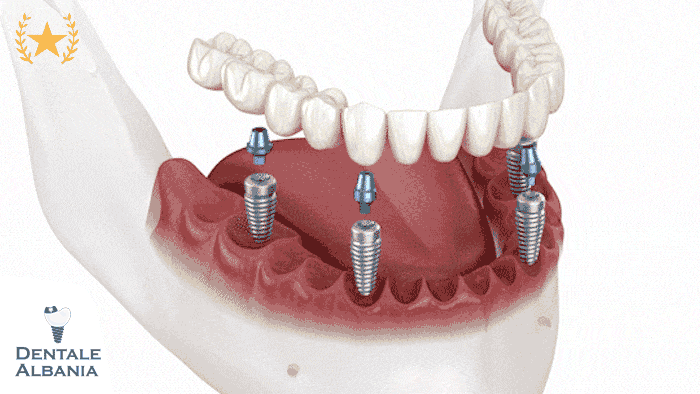Table of Contents
ToggleWhat Is Professional Dental Cleaning and Why Is It Important?

Even with the most dedicated brushing and flossing routines, your at-home oral care can’t fully replace the precision of a professional dental cleaning. This preventive dental procedure, typically performed by a dental hygienist, is essential for maintaining healthy gums, removing hard-to-reach plaque, and keeping your teeth bright and clean.
Professional dental cleaning, also known as a hygiene cleaning, involves more than just polishing your teeth. It focuses on removing both soft biofilm (plaque) and hardened calculus (tartar) from areas that toothbrushes simply can’t reach. These build-ups are major contributors to gum inflammation, periodontal disease, and tooth decay when left untreated. During your cleaning session, hygienists also assess your gum health and look for signs of oral issues like bleeding, swelling, or even early stages of gum disease.
Regular cleaning doesn’t just keep your teeth healthy—it also improves your overall well-being. Several studies have linked poor oral hygiene to systemic conditions like heart disease, diabetes, and stroke. By staying on top of your dental hygiene, you’re also protecting your general health.
Another important aspect of professional cleaning is early detection. During the appointment, your hygienist or dentist will examine your mouth, noting any signs of gum recession, enamel wear, or other issues. Catching these early can help prevent the need for costly or invasive treatments down the line.
People often confuse this procedure with whitening treatments. While professional cleanings do brighten your teeth by removing surface stains, they don’t change the natural color of the enamel. For whitening, cosmetic treatments are required. However, a thorough cleaning can be a great pre-whitening preparation, helping future treatments work more effectively.
Lastly, professional dental cleaning contributes to fresh breath by eliminating bacteria and food particles that cause bad odor. Combined with a tailored oral hygiene routine, it’s your best defense against gum disease and the embarrassment of persistent halitosis.
How Does Professional Dental Cleaning Work at the Dentist?
When you walk into the dental office for a professional dental cleaning, it’s more than just a quick polish. The cleaning process follows a structured sequence of steps designed to remove plaque, tartar, and stains, while also assessing the health of your teeth and gums. Here’s what to expect during your visit.
✅ What Happens During Your Dental Hygiene Appointment?
The appointment typically begins with a comprehensive oral exam. Using a small mirror, the dental hygienist inspects your teeth and gums for signs of inflammation, bleeding, plaque buildup, or gum recession. If anything concerning is spotted, the dentist may be brought in for a further check before the cleaning proceeds.
Next comes scaling, the removal of hardened tartar (also called calculus) from your teeth and below the gumline. Hygienists use ultrasonic scalers or manual hand tools to gently scrape away these deposits—areas you simply can’t clean at home with a toothbrush or floss.
Once the tartar is gone, your teeth are polished using a gritty paste and a high-powered electric brush. This polishing step removes leftover plaque and minor surface stains, giving your teeth a smoother, cleaner feel.
Then comes expert flossing, which not only cleans between the teeth but also helps identify areas prone to bleeding—an early sign of gum problems. Your hygienist will also rinse your mouth with a fluoride solution or antibacterial rinse to remove debris.
To wrap up, many clinics offer a fluoride treatment to protect your enamel and reduce the risk of cavities for months. This may come in the form of a gel in a tray, or a varnish painted directly on your teeth.
Throughout the session, your hygienist will also offer personalised advice on your brushing technique, flossing, and diet. This might include recommending specific products such as interdental brushes, electric toothbrushes, or fluoride mouthwash—tools that improve your routine at home.
✅ What Is AIR-FLOW Therapy and Is It Part of Cleaning?
AIR-FLOW therapy is a modern, non-invasive stain removal technique often offered alongside professional dental cleanings. Unlike traditional polishing, AIR-FLOW uses a stream of air, water, and fine powder (usually sodium bicarbonate or glycine) to blast away stains caused by tea, coffee, red wine, and tobacco.
This deep-cleaning method is especially effective in hard-to-reach areas and gum pockets where bacteria can thrive. While it’s not a whitening treatment, AIR-FLOW leaves teeth visibly brighter by removing external stains and restoring your natural tooth color.
It’s a great add-on for patients planning to undergo whitening or anyone wanting that ultra-clean, polished feeling.
How Often Should You Get a Professional Dental Cleaning?
The frequency of professional dental cleaning isn’t the same for everyone—it depends on your oral health status, lifestyle habits, and even genetics. While the standard recommendation for most people is to have a cleaning every six months, your dentist or hygienist may advise more or less frequent visits depending on your individual needs.
For example, if you have healthy gums, maintain excellent oral hygiene, and are not prone to excessive plaque buildup, a twice-a-year visit might be sufficient. However, individuals with certain conditions or habits may need to schedule cleanings more often—sometimes every 3 to 4 months.
✅ Who Needs More Frequent Dental Cleanings?
You might be advised to increase the frequency of your dental hygiene appointments if:
- You smoke or use tobacco products, which increase the risk of gum disease and tooth staining.
- You have a history of periodontal (gum) disease, which requires close monitoring and maintenance.
- You wear dental restorations like implants, bridges, or veneers, which need professional maintenance.
- You have a weakened immune system, diabetes, or a condition that affects healing or inflammation.
- You are pregnant, since hormonal changes can affect gum health.
- You experience excessive plaque or tartar buildup, despite brushing and flossing regularly.
- You suffer from bad breath (halitosis) that doesn’t improve with daily hygiene.
Your dentist or hygienist may also recommend more frequent visits if they observe signs of gingivitis or early periodontitis. By scheduling regular cleanings, these conditions can often be reversed or kept under control without needing more invasive procedures.
✅ How Often Should Smokers Get Their Teeth Cleaned?
Smoking is a major contributor to both tooth discoloration and gum disease. If you smoke, your dentist may recommend hygiene visits every 3 months to monitor your gum health and prevent severe staining and bacterial buildup.
These more frequent appointments also allow your hygienist to apply preventive care like fluoride or antibacterial rinses and help reduce the long-term damage caused by tobacco.
In summary, the ideal cleaning frequency is personal. At your next check-up, ask your dentist or hygienist for a customised hygiene plan based on your current oral health and lifestyle. Preventive care now can save you from complex treatments later.
What Are the Different Types of Dental Cleanings Available?

Not all dental cleanings are the same. Depending on your oral health, your dentist or hygienist may recommend one of several types of professional cleanings, each designed to address specific conditions like tartar buildup, gum inflammation, or periodontal disease. Here’s a breakdown of the four main types of dental cleanings and when each is used.
✅ What Is Prophylaxis and Who Is It For?
Prophylaxis dental cleaning is the most common and basic type of professional cleaning. The word “prophylaxis” means to prevent disease, and that’s exactly what this cleaning aims to do. It’s ideal for patients with generally healthy teeth and gums.
- Removes plaque and tartar from all tooth surfaces using ultrasonic and hand instruments.
- Includes polishing to remove minor stains and smooth the enamel.
- Recommended every 6 months for preventive care.
- Ideal for patients with no active gum disease.
If you brush and floss regularly, visit your dentist for checkups, and don’t experience bleeding gums or tartar buildup, this is likely the type of cleaning you’ll receive.
✅ What Is Scaling and Root Planing?
Also known as deep cleaning, scaling and root planing is recommended for patients with gum disease, particularly gingivitis or periodontitis.
- Scaling removes plaque and tartar from the surface of the teeth and below the gumline.
- Root planing smooths the root surfaces, helping gums reattach and heal.
- Often requires local anesthesia to reduce discomfort.
- May take multiple visits depending on severity.
- Designed to halt the progression of gum disease.
If you’ve noticed signs like bleeding gums, bad breath, or gum recession, your dentist may suggest this cleaning to prevent further damage and tooth loss.
✅ What Is Periodontal Maintenance Cleaning?
After you’ve received deep cleaning for gum disease, you may need ongoing care known as periodontal maintenance.
- Performed every 3 to 4 months.
- Focuses on keeping bacteria levels low and preventing gum pockets from worsening.
- Includes deep scaling around tooth roots and thorough gum health monitoring.
- Crucial for patients with a history of chronic periodontitis.
This is not a substitute for a regular prophylaxis cleaning—it’s a specific, targeted treatment used in ongoing periodontal care.
✅ What Is Gross Debridement Cleaning?
Gross debridement cleaning is the most intensive type of cleaning, designed for people who haven’t visited the dentist in over a year or have significant tartar buildup.
- Involves breaking up large deposits of hardened plaque and tartar.
- Often uses electric ultrasonic tools to loosen debris.
- Typically done before a follow-up cleaning (prophylaxis).
- May take longer and require multiple appointments.
If your oral hygiene has been neglected or you’re returning to the dentist after years, this is often the first step to restoring your dental health.
What Are the Benefits of Getting Your Teeth Cleaned Professionally?
While brushing and flossing at home form the foundation of oral hygiene, professional dental cleaning offers benefits that go far beyond what your toothbrush can achieve. Here’s how routine cleanings help you maintain a healthier, fresher, and more confident smile — both in the short and long term.
✅ Removal of Plaque and Tartar Buildup
Even the most effective brushing techniques can’t remove hardened tartar (calculus). A professional cleaning uses tools designed to remove plaque and tartar from above and below the gumline, areas that are impossible to reach at home.
- Helps prevent cavities and decay.
- Reduces bacterial load that contributes to oral disease.
- Essential for long-term tooth preservation.
✅ Prevention of Gum Disease
Plaque and tartar at the gumline can lead to gingivitis and progress to periodontitis, a more serious condition that threatens tooth-supporting structures.
- Cleanings help reduce inflammation, bleeding, and pocket formation.
- Keeps gums firm, pink, and attached.
- Reduces risk of tooth mobility and eventual loss.
✅ Brighter, Cleaner-Looking Teeth
Professional polishing and AIR-FLOW therapy remove surface stains caused by coffee, tea, red wine, and tobacco.
- Restores the natural whiteness of your teeth.
- Enhances your aesthetic appearance without the need for chemical whitening.
- Makes your smile look instantly healthier and fresher.
✅ Fresher Breath (Halitosis Control)
Bad breath is often caused by bacteria trapped in plaque, tartar, or under the gumline.
- Professional cleanings remove the odor-causing agents at their source.
- Leave your breath noticeably fresher.
- Ideal for patients with persistent halitosis not solved by brushing or mouthwash alone.
✅ Early Detection of Oral Issues
Hygienists often detect early signs of problems like gum disease, tooth wear, cavities, or oral cancer during cleanings.
- Early intervention leads to simpler, more affordable treatments.
- Prevents progression of conditions that may otherwise go unnoticed.
✅ Boosted Overall Health
Numerous studies have shown links between oral health and systemic conditions, including:
- Heart disease
- Diabetes
- Stroke
- Pregnancy complications
Maintaining healthy gums reduces inflammation and infection risks that can impact your general health.
What Are the Risks or Disadvantages of Professional Dental Cleaning?
While professional dental cleaning is overwhelmingly safe and beneficial, it’s normal for patients to have questions or concerns about possible discomfort, sensitivity, or complications. Here’s a balanced look at what to expect — and why any minor drawbacks are far outweighed by the long-term advantages.
✅ Is Professional Dental Cleaning Painful?
For most patients, the procedure is completely painless — especially if you already maintain good oral hygiene. However, there are exceptions:
- If you have sensitive teeth, gum inflammation, or exposed tooth roots, you may feel discomfort during scaling.
- Deep cleanings like scaling and root planing can cause mild soreness due to work done below the gumline.
- Dentists may offer local anesthesia or numbing gel for patients who are more sensitive.
The key is to communicate openly with your hygienist — they can adjust their technique and use numbing agents to make your experience comfortable.
✅ What Can Go Wrong in a Dental Cleaning?
Although complications are rare, some temporary side effects may occur after your appointment:
- Gum soreness or tenderness, especially if tartar buildup was significant.
- Mild bleeding, particularly in patients with gingivitis or periodontal pockets.
- Tooth sensitivity, especially to hot or cold, which typically resolves in a few days.
More serious issues like gum injury, infection, or enamel damage are extremely uncommon and generally linked to poor technique — which is why choosing a qualified, experienced hygienist is important.
✅ Can You Be Put to Sleep for Teeth Cleaning?
In general, sedation isn’t necessary for routine dental cleaning. However:
- Patients with severe dental anxiety or undergoing deep cleaning procedures may be offered options like oral sedation, laughing gas (nitrous oxide), or in rare cases, IV sedation.
- These options are more common in advanced periodontal treatments or patients with special needs.
Always discuss sedation preferences with your dental team ahead of time.
✅ Why Might You Feel Unwell After a Cleaning?
Some patients report mild, short-term effects after a cleaning, such as:
- Stomach upset or nausea, usually from swallowing debris or excess fluoride.
- Jaw fatigue, especially if you’ve had a longer session.
- A sensation of “looseness” in teeth due to the removal of surrounding tartar (this sensation usually fades quickly).
These effects are temporary and harmless, and your dental team can advise on aftercare to help you recover comfortably.
How Much Does Professional Dental Cleaning Cost?

One of the most common concerns among patients is the cost of professional dental cleaning. The good news is that this essential preventive treatment is relatively affordable — especially when compared to the costs of treating cavities, gum disease, or tooth loss later on.
Let’s break down what to expect in both private and public (NHS) settings, and explain why this routine investment is often a money-saver in the long term.
✅ What’s the Cost of Private vs NHS Dental Cleaning?
In the UK, dental hygiene cleanings can be accessed either privately or through the NHS, each with its own pricing structure:
- NHS Band 1 Treatment (£25.80–£26.80): Covers a basic exam and scale and polish, if clinically necessary.
- NHS Band 2 Treatment (£70–£75): Covers more involved cleaning when gum disease is present, including root surface debridement.
- Private Hygiene Appointments: Typically range from £45 to £170 per session, depending on location, length of session, and whether treatments like AIR-FLOW or fluoride application are included.
Private clinics may also offer comprehensive hygiene plans or packages (e.g., “Fresh Breath Plans” or deep cleaning programs), especially for patients with gum health concerns.
What’s the Cost of Private vs NHS Dental Cleaning in Albania?
Unlike countries with a nationalized dental care system (like the UK’s NHS), Albania does not have an equivalent public dental service that routinely covers professional dental cleaning for adults. Dental care in Albania is almost entirely private, meaning that patients are responsible for the full cost of hygiene treatments — but the good news is, prices are significantly lower than in Western Europe.
Private Dental Cleaning Prices in Albania
-
Basic scale and polish: €30 to €50
-
AIR-FLOW cleaning (stain removal with bicarbonate spray): €40 to €70
-
Deep cleaning / periodontal cleaning: €70 to €120 per session (may require multiple sessions for severe gum disease)
Prices can vary depending on:
-
The city (Tirana clinics may charge slightly more than smaller towns)
-
Whether additional services are included (e.g. fluoride, check-up, x-rays)
-
The equipment used (advanced ultrasonic scalers or AIR-FLOW systems cost more)
Public Coverage / State Support in Albania
-
Albania’s public health system does not routinely cover professional dental cleaning for adults.
-
Some basic emergency care or limited procedures may be subsidized in public clinics, but routine hygiene services are out-of-pocket.
-
Children under 18 may be eligible for free or discounted dental check-ups in public health centers, but professional hygiene sessions are still usually private.
Why Many Foreigners Choose Albania for Dental Hygiene
Due to affordable prices, modern clinics, and short waiting times, Albania is a growing destination for dental tourism. Many patients from Italy, the UK, Germany, and Switzerland travel to Albania for cleanings and advanced treatments at a fraction of the cost.
✅ Is It Worth It Compared to At-Home Cleaning Kits?
While there are dozens of at-home tools and DIY products that claim to clean teeth and remove stains, they cannot replace professional cleaning:
- Home whitening kits, baking soda, or tartar scrapers may cause abrasion or enamel damage when misused.
- Deep tartar and subgingival plaque can only be removed with specialised dental instruments.
- Overuse of whitening toothpaste or harsh abrasives may lead to tooth sensitivity or gum recession.
Professional dental cleaning, on the other hand, offers:
- Safe removal of hard deposits
- Tailored care based on your oral health condition
- Early detection of underlying issues
- Access to additional treatments like fluoride or AIR-FLOW therapy
In essence, while DIY methods might seem cost-effective upfront, they can result in expensive damage or missed warning signs. Routine professional cleanings are a smarter long-term investment in your dental and overall health.
Is It Better to Get Your Teeth Cleaned Professionally or Do It at Home?
Maintaining oral hygiene at home is critical — but it’s not enough on its own. While brushing and flossing form the backbone of your daily routine, there’s simply no substitute for professional dental cleaning. Let’s compare both approaches to understand why they work best together, not as alternatives.
✅ How Effective Is At-Home Teeth Cleaning?
A consistent at-home routine should include:
- Brushing twice daily with fluoride toothpaste
- Flossing or using interdental brushes once daily
- Using mouthwash to reduce bacteria and freshen breath
- Cleaning your tongue to eliminate odor-causing bacteria
This routine helps prevent plaque buildup and keeps your teeth and gums in good shape between appointments. But even the best at-home routine has limitations:
- Can’t remove hardened tartar
- Doesn’t reach below the gumline
- Cannot fully assess signs of gum disease or tooth decay
✅ Why Professional Cleanings Are Still Essential
During a professional cleaning, your hygienist uses advanced instruments like ultrasonic scalers, hand tools, and polishing pastes to:
- Remove calculus (tartar) that has solidified on your teeth
- Clean under the gumline, preventing periodontal disease
- Detect early signs of oral conditions
- Apply treatments like fluoride or AIR-FLOW stain removal
No home tool — not even the best electric toothbrush — can replicate this level of precision.
✅ Common Myths About At-Home Cleaning
Myth 1: “Hard bristles clean better.”
Truth: They can wear down enamel and irritate gums, causing sensitivity.
Myth 2: “Whitening toothpaste will make my teeth white again.”
Truth: Most only remove surface stains — they don’t change tooth color and can be abrasive if overused.
Myth 3: “I can deep clean at home with baking soda or hydrogen peroxide.”
Truth: These substances may damage your enamel or gums, and they do not replace a hygienist’s care.
✅ Can You Deep Clean Your Teeth at Home?
No — deep cleaning, also known as scaling and root planing, must be performed by a trained dental professional.
Attempting it at home can:
- Cause gums to recede
- Leave tartar behind in hard-to-reach areas
- Miss signs of active infection or inflammation
DIY dental kits and metal tools may seem tempting, but they come with serious risks if used improperly.
The best approach? Use home care to maintain your mouth daily — but rely on regular professional cleanings to handle the rest. This partnership gives you the best chance at lifelong oral health.
What Advice Can Help You Maintain Clean Teeth Between Visits?

While professional dental cleanings are essential for long-term oral health, your daily habits at home are just as important. Practicing good oral hygiene between appointments helps extend the benefits of each cleaning and reduces the buildup of plaque and tartar. Here are practical, expert-backed tips to keep your teeth clean, gums healthy, and breath fresh — every day.
✅ Brush Properly Twice a Day
- Use a soft-bristled toothbrush or electric brush with a round head.
- Brush for two full minutes, morning and night.
- Use a fluoride toothpaste to strengthen enamel and fight decay.
- Brush gently in small circular motions, angling toward the gumline.
- Avoid brushing too hard, which can cause gum recession and enamel wear.
✅ Don’t Skip Flossing
- Clean between teeth daily using floss or interdental brushes.
- Curve the floss around each tooth and go slightly under the gumline.
- Flossing removes debris and plaque from areas your toothbrush can’t reach — reducing the risk of gum disease and bad breath.
✅ Use Mouthwash Wisely
- An antibacterial mouthwash helps reduce bacteria and plaque.
- Fluoride rinses can strengthen enamel and protect against cavities.
- Avoid alcohol-based rinses if you have sensitive tissues or a dry mouth.
✅ Clean Your Tongue Daily
- Use a tongue scraper or the back of your toothbrush.
- Bacteria build up on the tongue, causing bad breath and inflammation.
- A clean tongue is a key part of comprehensive oral hygiene.
✅ Avoid Sugary and Acidic Foods
- Minimize intake of sugar, fizzy drinks, and acidic snacks.
- Rinse your mouth with water after acidic meals to protect enamel.
- Maintain a balanced diet rich in leafy greens, dairy, and water to support oral health.
✅ Drink Plenty of Water
- Water helps wash away food particles and maintain saliva flow.
- Saliva neutralizes acids and protects your teeth from decay.
- Staying hydrated is essential for fresher breath and cleaner teeth.
✅ Don’t Smoke or Use Tobacco Products
- Tobacco increases your risk for gum disease, stains, and oral cancer.
- It also reduces healing and compromises the effectiveness of cleanings.
- Quitting smoking is one of the best things you can do for your teeth and gums.
✅ Stick to Your Dental Visits
- Visit your hygienist or dentist every 6 months — or more frequently if advised.
- Regular check-ups catch problems early and ensure your teeth stay clean and healthy.
- Consider enrollment in dental care plans to ensure consistent maintenance.
Frequently Asked Questions About Professional Dental Cleaning
To wrap up, here are answers to two of the most common questions people ask about professional dental cleaning. These FAQs directly address concerns that often influence whether and when someone books a hygiene appointment.
Is a Scale and Polish Included in a Dental Check-up?
Whether a scale and polish is included in your dental check-up depends on where you’re receiving care and the condition of your oral health. In the UK, the answer varies significantly between NHS and private dental practices.
Under the NHS, a scale and polish is only included if it’s deemed clinically necessary. This means:
- If your dentist finds signs of plaque or tartar buildup that could lead to gum disease, you may receive a scale and polish as part of a Band 1 or Band 2 treatment.
- If your teeth are generally healthy and free from active gum issues, the NHS may not provide a scale and polish as part of your check-up — even if you request it.
In contrast, private dental practices often include or offer a scale and polish as part of a routine hygiene visit or check-up:
- You can book directly with a hygienist for a cleaning session, often without needing a dentist’s referral.
- Treatments such as AIR-FLOW therapy, fluoride application, or deep cleaning options may also be available, depending on your needs and preferences.
It’s also worth noting that some dental care plans (like Denplan or Bupa Smile Plans) offer bundled packages that include regular check-ups and hygiene appointments — making it more cost-effective to receive a scale and polish on a regular schedule.
In summary:
- NHS: Included only if deemed clinically necessary.
- Private: Usually available on request or included in hygiene appointments.
- Always ask your clinic in advance what is covered in your appointment.
Can I See a Dental Hygienist Without a Dentist in the UK?
Yes — in the UK, you can see a dental hygienist without a referral from a dentist. This is known as direct access, and it was approved by the General Dental Council (GDC) in 2013. It allows patients to book an appointment directly with a hygienist for preventive treatments like a scale and polish or stain removal, without needing a prior dental examination.
Here’s what you should know about direct access:
- Hygienists can provide cleanings, oral hygiene advice, and some preventive care, but they cannot diagnose or treat dental diseases such as cavities or infections. That remains the responsibility of a dentist.
- If your hygienist spots any concerning signs, they will refer you to a dentist for further examination or treatment.
- Direct access is widely available in private dental practices, but NHS dental hygienists still require a dentist’s prescription for treatment — so you’ll need to go through your NHS dentist for hygiene appointments under NHS care.
- Some private clinics offer dedicated hygiene plans or packages that make regular access to a hygienist even easier and more cost-effective.
Bottom line:
- ✅ Private care: You can book with a hygienist directly.
- ❌ NHS care: You’ll need a dentist’s exam or referral.
- It’s still a good idea to see both a dentist and a hygienist regularly for comprehensive care.
✅ Can I See a Dental Hygienist Without a Dentist in Albania?
In Albania, the structure of dental care differs from countries with nationalized health services, and this includes how dental hygienists operate. While direct access to hygienists — meaning patients can book a hygiene appointment without first seeing a dentist — is common in countries like the UK or US, the rules in Albania are more flexible but also less standardized.
Most private dental clinics in Albania are independently owned and determine their own booking policies. Typically, dental hygienists work closely with general dentists and operate as part of an integrated care team. In these settings, the most common process is:
-
A new patient is first seen by a dentist for an initial consultation or check-up.
-
The dentist evaluates oral health, identifies any active conditions (like cavities or gum disease), and then refers the patient to the hygienist for professional cleaning if appropriate.
-
After the initial diagnosis, future hygiene appointments can often be scheduled directly with the hygienist — especially for maintenance cleanings.
For returning or long-term patients, many clinics do allow direct hygiene bookings without requiring a dental examination each time. This is particularly common for:
-
Routine scale and polish cleanings
-
AIR-FLOW stain removal sessions
-
Follow-up periodontal maintenance cleanings
However, if signs of active disease (such as bleeding gums, recession, or tartar buildup below the gumline) are present, the hygienist may still refer the patient back to the dentist before proceeding.
Key Takeaways:
-
Yes, you can often book directly with a dental hygienist in Albania — especially for maintenance cleanings.
-
An initial dentist evaluation is usually required if you’re a new patient or have complex dental needs.
-
There is no legal barrier preventing direct access, but most clinics will assess on a case-by-case basis.
-
For dental tourism patients, many clinics streamline this process, offering combined consultation + hygiene packages.
Albania’s private dental sector is modern, flexible, and patient-focused. If you’re seeking quick access to a hygiene treatment, especially in cities like Tirana or Durrës, you’ll often be able to schedule directly — just contact the clinic to confirm their policy.


